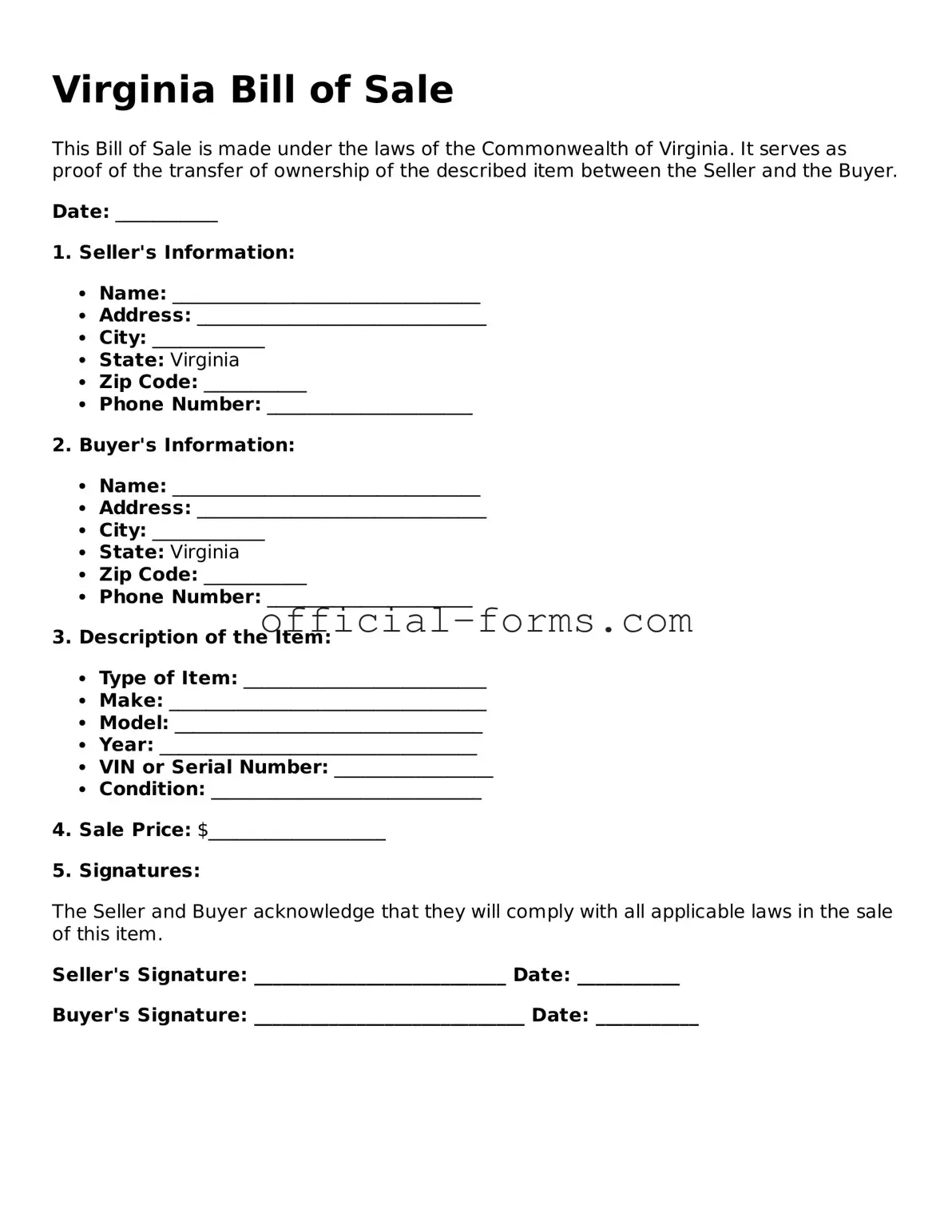Filling out the Virginia Bill of Sale form can be a straightforward process, but many individuals make common mistakes that can lead to complications down the line. One prevalent error is failing to provide accurate information about the vehicle or item being sold. Whether it’s the Vehicle Identification Number (VIN) or a description of the item, inaccuracies can create confusion and may even lead to disputes.
Another mistake is neglecting to include the date of the transaction. This seemingly minor detail is crucial, as it establishes the timeline of ownership and can be important for legal purposes. Without a date, both parties may face challenges in proving when the sale occurred.
People often overlook the need for both the buyer's and seller's signatures. A Bill of Sale is not just a formality; it serves as a legal document that requires acknowledgment from both parties. Failing to sign the document can render it invalid, leaving both parties unprotected.
Additionally, many individuals forget to include the purchase price. This omission can complicate matters, especially if there are future disputes regarding the sale. A clear record of the transaction amount is essential for both tax purposes and for establishing the value of the item sold.
When it comes to identifying the buyer and seller, errors can also occur. Some individuals mistakenly provide incomplete names or incorrect addresses. This can lead to issues if either party needs to be contacted later or if legal action becomes necessary.
Another common pitfall is failing to check for any liens on the vehicle or item being sold. If a lien exists, the seller may not have the legal right to transfer ownership. Buyers should always verify that the item is free of encumbrances to avoid future headaches.
People sometimes forget to make copies of the completed Bill of Sale. It’s essential for both parties to retain a copy for their records. This document can serve as proof of ownership and transaction details in case of future disputes.
Many individuals also skip the section that outlines any warranties or guarantees. Clearly stating whether the item is sold "as is" or with any guarantees can help avoid misunderstandings later. Buyers should know exactly what they are getting, while sellers need to protect themselves from potential claims.
Another mistake is not properly notarizing the document when required. While a Bill of Sale does not always need to be notarized, certain situations may call for it. Failing to do so when necessary can lead to complications, especially in transactions involving high-value items.
Lastly, some people do not take the time to read the entire form before submitting it. Skimming through can lead to missing critical sections or making errors that could have been easily avoided. Taking a moment to review the entire document ensures accuracy and completeness, providing peace of mind for both parties involved.
